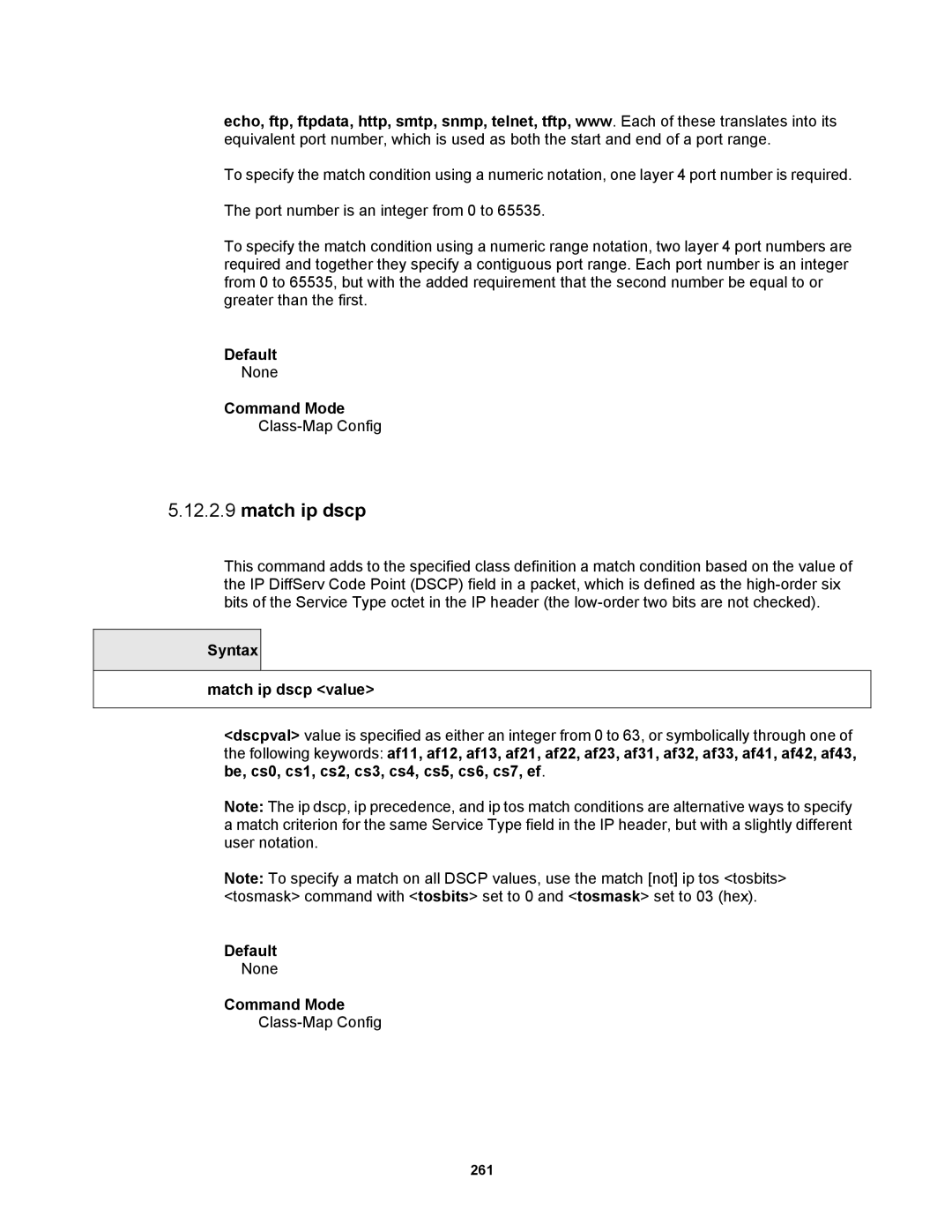
echo, ftp, ftpdata, http, smtp, snmp, telnet, tftp, www. Each of these translates into its equivalent port number, which is used as both the start and end of a port range.
To specify the match condition using a numeric notation, one layer 4 port number is required.
The port number is an integer from 0 to 65535.
To specify the match condition using a numeric range notation, two layer 4 port numbers are required and together they specify a contiguous port range. Each port number is an integer from 0 to 65535, but with the added requirement that the second number be equal to or greater than the first.
Default
None
Command Mode
5.12.2.9match ip dscp
This command adds to the specified class definition a match condition based on the value of the IP DiffServ Code Point (DSCP) field in a packet, which is defined as the
Syntax
match ip dscp <value>
<dscpval> value is specified as either an integer from 0 to 63, or symbolically through one of the following keywords: af11, af12, af13, af21, af22, af23, af31, af32, af33, af41, af42, af43, be, cs0, cs1, cs2, cs3, cs4, cs5, cs6, cs7, ef.
Note: The ip dscp, ip precedence, and ip tos match conditions are alternative ways to specify a match criterion for the same Service Type field in the IP header, but with a slightly different user notation.
Note: To specify a match on all DSCP values, use the match [not] ip tos <tosbits> <tosmask> command with <tosbits> set to 0 and <tosmask> set to 03 (hex).
Default
None
Command Mode
261
